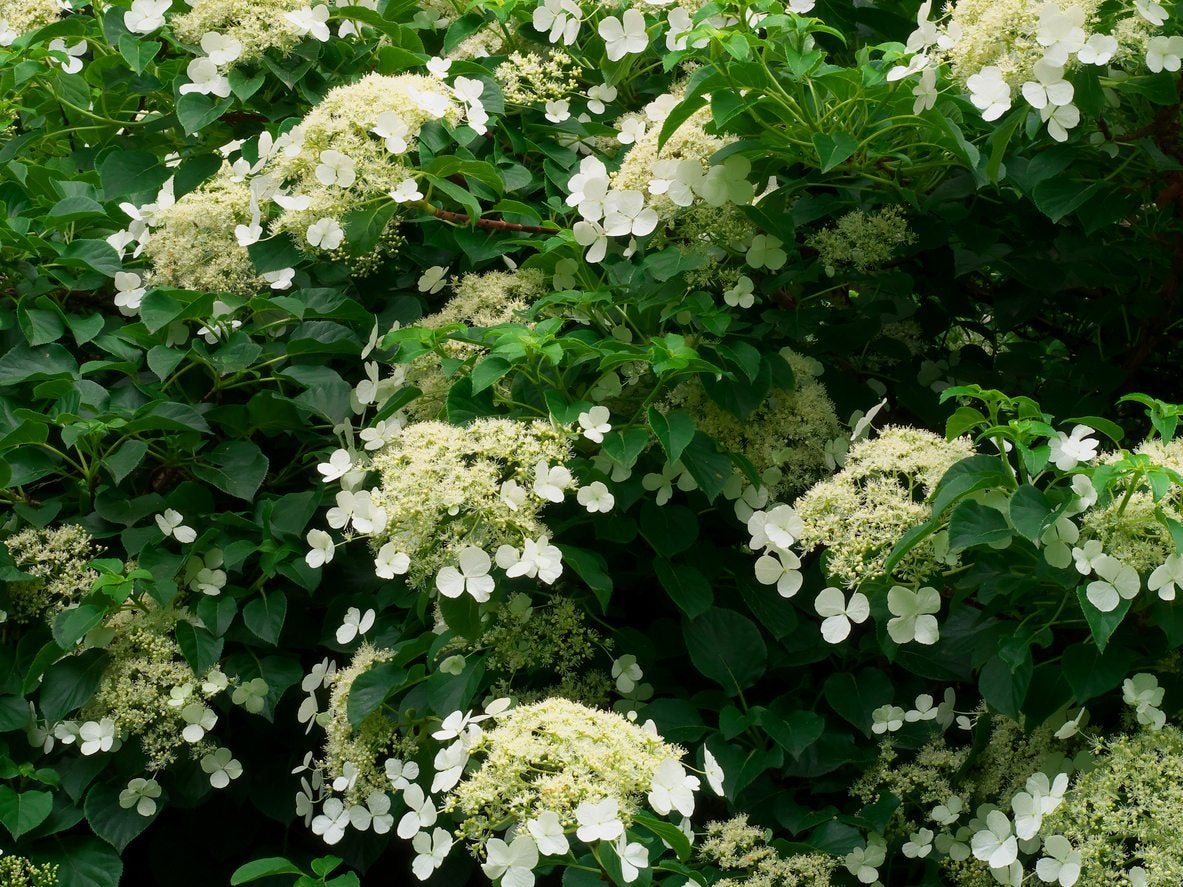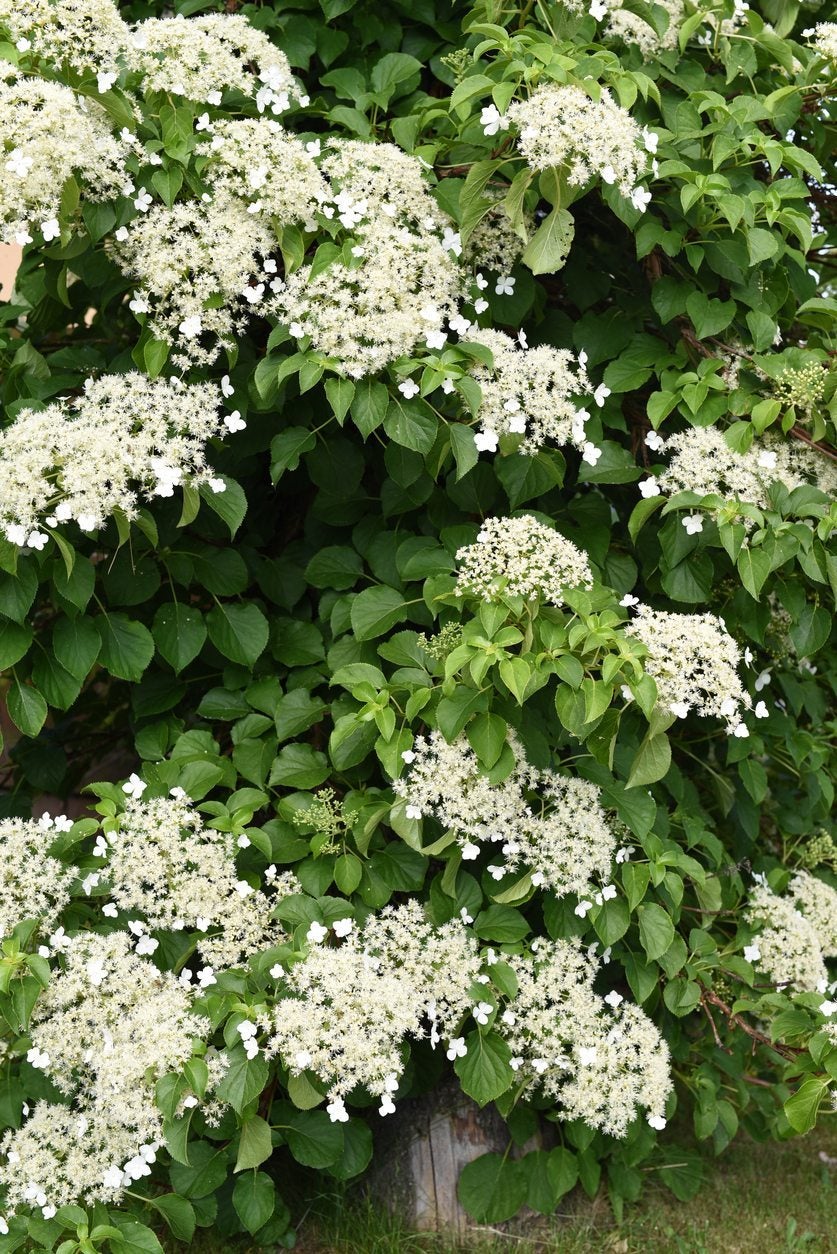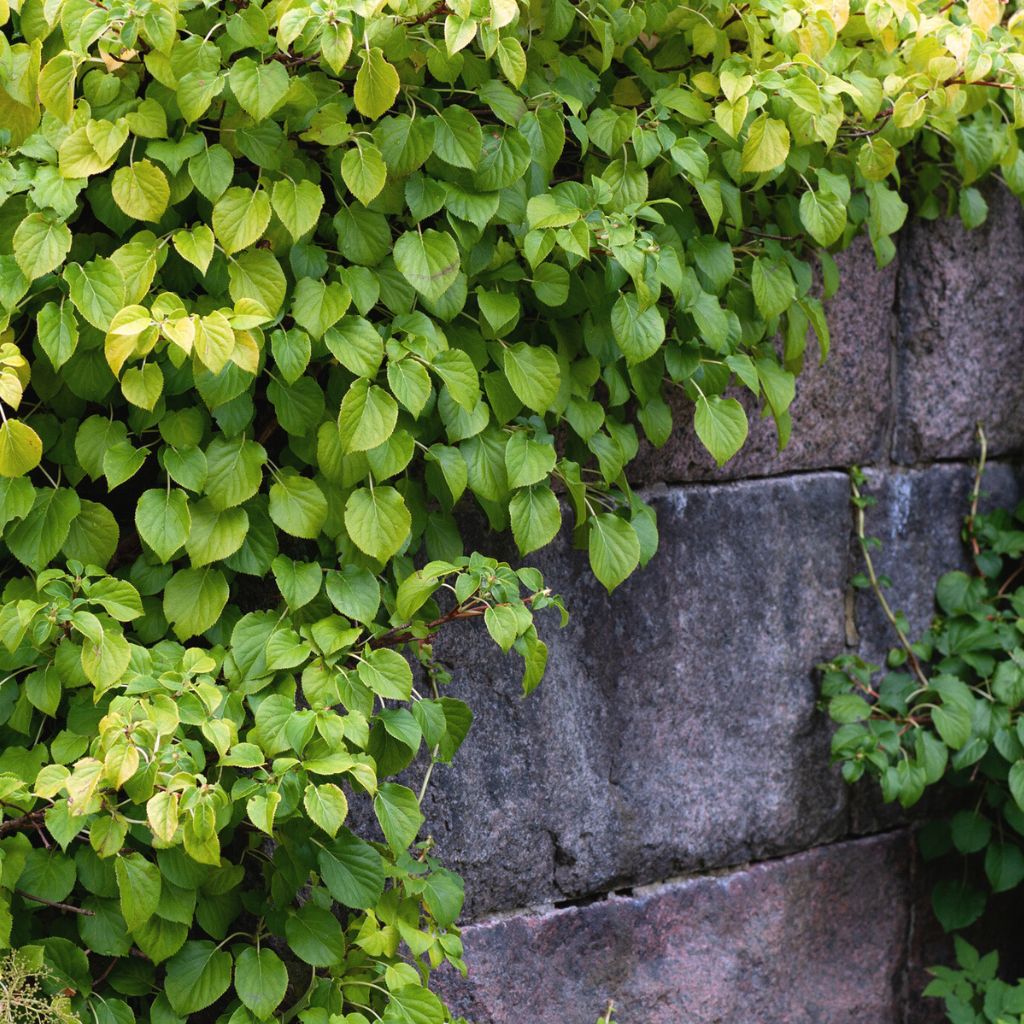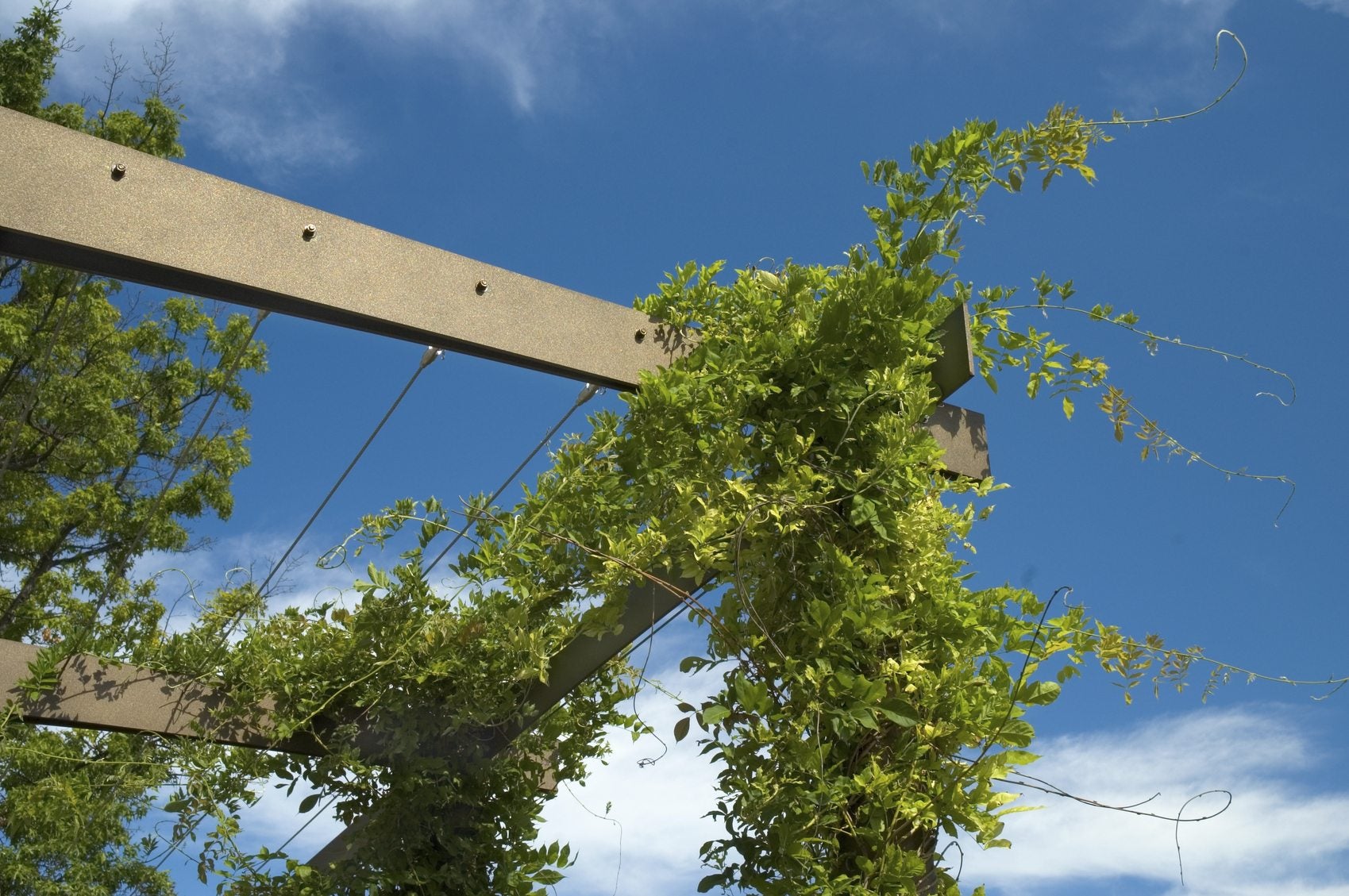Climbing Hydrangea Pruning – How To Prune Climbing Hydrangea Vines


Climbing hydrangea is a spectacular plant, but it has a rambunctious nature and get easily get out of control if you aren’t careful. Pruning climbing hydrangeas isn’t difficult and will keep the vines looking their best. Read on to learn about climbing hydrangea pruning.
When to Prune a Climbing Hydrangea
Deadheading: If your climbing hydrangea doesn’t need pruning, just remove old, wilted blooms to keep the plant looking tidy. Maintenance pruning: Cutting back hydrangea vines is best done immediately after flowering, before new buds appear. Otherwise, you risk cutting off flower buds that appear soon after flowering, thus drastically reducing development of new blooms for the upcoming year. Winter-killed growth: Dead or damaged growth should be removed in early spring, when buds are appearing or just beginning to open. However, damaged growth can be removed as needed any time of year. Staggered pruning for overgrown plants: If the climbing hydrangea vine is badly overgrown, reduce the size gradually by staggering the pruning over a span of two or three years. Hard pruning of old or badly neglected plants: Old, neglected vines can be cut to the ground. This means you won’t enjoy blooms the coming season, but the rejuvenated plant should come back better than ever the following year.
How to Prune Climbing Hydrangea
Cutting back hydrangea vines is uninvolved; simply cut off wayward shoots just below spent blooms or at the point where the vine joins a larger stem. You can also cut off old or dead stems at the base of the plant to stimulate healthy new growth. Always use clean, sharp pruners when cutting back hydrangea vines. Wipe the pruners with rubbing alcohol or a solution of bleach and water to kill bacteria.
Gardening tips, videos, info and more delivered right to your inbox!
Sign up for the Gardening Know How newsletter today and receive a free copy of our e-book "How to Grow Delicious Tomatoes".

A Credentialed Garden Writer, Mary H. Dyer was with Gardening Know How in the very beginning, publishing articles as early as 2007.
-
 Looking For Plants To Give You The Soft And Fuzzies? Try These 5 Fuzzy Leaf Plant Options
Looking For Plants To Give You The Soft And Fuzzies? Try These 5 Fuzzy Leaf Plant OptionsLovers of texture, drama, silver foliage and tactile plants will adore these special sensory garden additions. These fuzzy leaf plant options will leave you all aglow
By Susan Albert
-
 Get Ready For A Summer Of Hummers! Grow These Full Sun Hummingbird Plants and Flowers
Get Ready For A Summer Of Hummers! Grow These Full Sun Hummingbird Plants and FlowersIf you’re lucky enough to enjoy a sunny backyard, make sure you are maxing out on your pollinator opportunities and grow these full sun hummingbird plants and flowers
By Tonya Barnett
-
 Evergreen Hydrangea Care – Growing An Evergreen Climbing Hydrangea
Evergreen Hydrangea Care – Growing An Evergreen Climbing HydrangeaIf you love your garden hydrangea plants but would like to try a new variety, take a look at evergreen hydrangea vines. These hydrangeas climb up trellises, walls or trees, but can also be grown as shrubs. Learn more about the plants in this article.
By Teo Spengler
-
 Climbing Hydrangea Won’t Bloom – When Does Climbing Hydrangea Bloom
Climbing Hydrangea Won’t Bloom – When Does Climbing Hydrangea BloomClimbing hydrangeas have charming lacecap flowerheads made up of a disc of tiny, tightly packed flowers surrounded by a ring of larger blossoms. This article explains what to do when your climbing hydrangea fails to bloom. Click here to learn more.
By Jackie Carroll
-
 Getting Climbing Hydrangea To Climb: How To Make A Climbing Hydrangea Climb
Getting Climbing Hydrangea To Climb: How To Make A Climbing Hydrangea ClimbIf you have a climbing hydrangea not climbing, what do you do? Click this article to learn more about attaching climbing hydrangeas to support and getting climbing hydrangeas to climb like they?re supposed to.
By Darcy Larum
-
 Climbing Hydrangea Plant - Tips On How To Grow a Climbing Hydrangea
Climbing Hydrangea Plant - Tips On How To Grow a Climbing HydrangeaClimbing hydrangeas feature large, fragrant clusters of white flowers that bloom in late spring and summer against a backdrop of dark green, heart-shaped foliage. Learn how to grow them with info in this article.
By Jackie Carroll